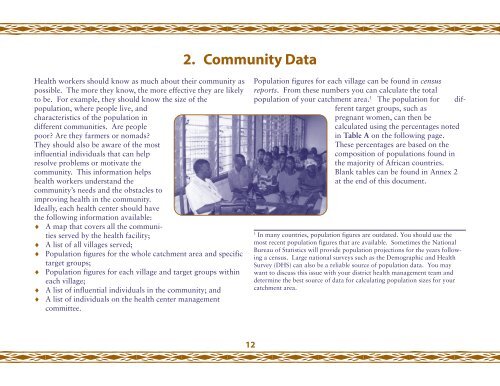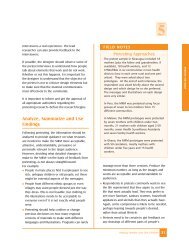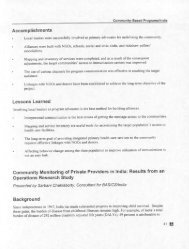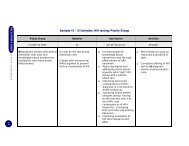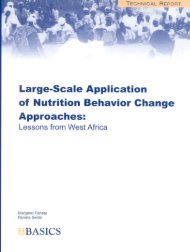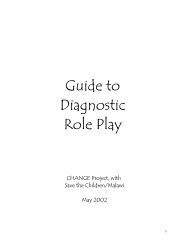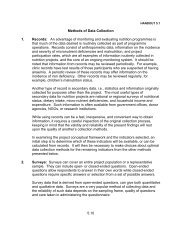Using Data to Improve Service Delivery - A Self-Evaluation Approach
Using Data to Improve Service Delivery - A Self-Evaluation Approach
Using Data to Improve Service Delivery - A Self-Evaluation Approach
Create successful ePaper yourself
Turn your PDF publications into a flip-book with our unique Google optimized e-Paper software.
2. Community <strong>Data</strong><br />
Health workers should know as much about their community as<br />
possible. The more they know, the more effective they are likely<br />
<strong>to</strong> be. For example, they should know the size of the<br />
population, where people live, and<br />
characteristics of the population in<br />
different communities. Are people<br />
poor? Are they farmers or nomads?<br />
They should also be aware of the most<br />
influential individuals that can help<br />
resolve problems or motivate the<br />
community. This information helps<br />
health workers understand the<br />
community’s needs and the obstacles <strong>to</strong><br />
improving health in the community.<br />
Ideally, each health center should have<br />
the following information available:<br />
♦ A map that covers all the communities<br />
served by the health facility;<br />
♦ A list of all villages served;<br />
♦ Population figures for the whole catchment area and specific<br />
target groups;<br />
♦ Population figures for each village and target groups within<br />
each village;<br />
♦ A list of influential individuals in the community; and<br />
♦ A list of individuals on the health center management<br />
committee.<br />
Population figures for each village can be found in census<br />
reports. From these numbers you can calculate the <strong>to</strong>tal<br />
population of your catchment area. 1 The population for different<br />
target groups, such as<br />
pregnant women, can then be<br />
calculated using the percentages noted<br />
in Table A on the following page.<br />
These percentages are based on the<br />
composition of populations found in<br />
the majority of African countries.<br />
Blank tables can be found in Annex 2<br />
at the end of this document.<br />
1<br />
In many countries, population figures are outdated. You should use the<br />
most recent population figures that are available. Sometimes the National<br />
Bureau of Statistics will provide population projections for the years following<br />
a census. Large national surveys such as the Demographic and Health<br />
Survey (DHS) can also be a reliable source of population data. You may<br />
want <strong>to</strong> discuss this issue with your district health management team and<br />
determine the best source of data for calculating population sizes for your<br />
catchment area.<br />
12


